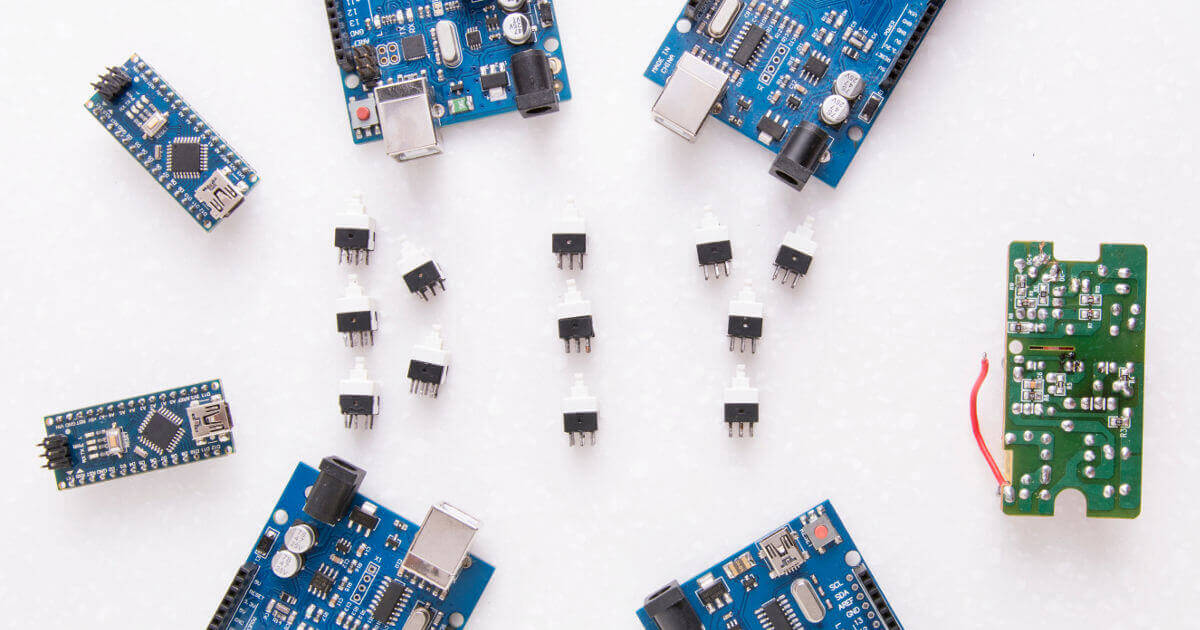The 12 best Raspberry Pi Pico projects
Released in 2021, the Raspberry Pi Pico is a microcontroller that can help you put a range of project ideas into practice. The microcontroller can be programmed with MicroPython as well as with C and C++.
- Everything you should know about the Raspberry Pi Pico microcontroller
- Just starting out? Program a blinking LED
- Interface an LCD display with Raspberry Pi Pico
- Support your Raspberry Pi Pico with LoRaWAN
- Send texts to your phone over the Wi-Fi
- Try Pico Pong for a Raspberry Pi Pico project with a bit of fun
- Jam to Pico Portal Music Box
- Machine learning with Raspberry Pi Pico
- Create your own line-following robot
- Measure and display signals with Smartphone oscilloscope
- Measure temperature and humidity with DHT11 sensor
- Crunch the numbers with Mandelbrot on Raspberry Pi Pico
- Step on the gas with Raspberry Pi Pico
Everything you should know about the Raspberry Pi Pico microcontroller
The Raspberry Pi Pico is the smallest model of the Raspberry Pi family and costs less than $10. It’s ideal if you’re just starting out in microcontroller programming because it’s so affordable. The technical specifications are nevertheless impressive:
The 2-core processor runs at a clock frequency of up to 166 MHz but is perfectly suited for overclocking. The main memory is 264 KB RAM. Like other microcontrollers, the Raspberry Pi Zero can be programmed with the Arduino IDE and the programming language C. If you don’t know C yet, you can also fall back on MicroPython to put your project ideas into practice.
If you prefer working with other minicomputers, we recommend looking at our articles on the best Arduino projects and Banana Pi projects.
Just starting out? Program a blinking LED
If you’re short on experience when it comes to programming microcontrollers, then a https://iotdesignpro.com/projects/getting-started-with-raspberry-pi-pico-blinking-led-on-pico-using-micropythonTutorial for Raspberry Pi Pico Flashing LED" target="_blank">blinking LED is a great Raspberry Pi Pico beginners’ project. With the help of the programming language MicroPython, you can write the simple program that provides a timer for the blinking LED. In addition to the microcontroller you’ll also need an LED and a plug-in board to connect the LED and the Raspberry Pi Pico.
Interface an LCD display with Raspberry Pi Pico
Another Raspberry Pi Pico project that you can program with MicroPython is an LCD display that outputs a text of your choice. For this, you’ll need your Raspberry Pi Pico and of course an LCD. Connect the pins of the display with the pins of your microcontroller using a plug-in board. The code needed to interact with the LCD is a bit more complex, so you can choose to also download it.
Support your Raspberry Pi Pico with LoRaWAN
The LoRaWAN network protocol lets you transmit data over long distances of up to 9.3 miles in a resource-efficient way. The disadvantage is that the transmission rate is only in the byte range. In addition, you have to be in a LoRaWAN network. Luckily, this isn’t an issue thanks to a globally active community.
If you’re interested in setting up LoRaWAN support for your Raspberry Pi Pico, then you’re in luck: Sandeep Mistry, the author of the Arduino LoRa library, has extended it to support the Raspberry Pi Pico. To enable LoRaWAN on your microcontroller, you’ll first need a LoRa Radio Breakout that you can connect to your Raspberry Pi Pico. Once the microcontroller is set up, nothing can stop you from sending data.
Send texts to your phone over the Wi-Fi
Another Raspberry Pi Pico project uses the app Blynk to send messages to your smartphone. To start, connect Raspberry Pi Pico to your Wi-Fi. This works with an external, battery-powered Wi-Fi module that you can connect to your microcontroller. Them, set up the Blynk app, which connects microcontrollers and other IoT devices via the Internet. It can also be used to receive messages.
Try Pico Pong for a Raspberry Pi Pico project with a bit of fun
With a few accessories and a bit of programming know-how, you can use your Raspberry Pi Pico to run a gesture-controlled ping-pong game. To start, you’ll need to overclock your Raspberry Pi Pico, which is something the microcontroller is known for. The code to run the game can be downloaded on GitHub. Now, the only thing left to do is play ping-pong.
Jam to Pico Portal Music Box
If you’re more into music than games, then Music Box is the right Raspberry Pi Pico project for you. Besides the microcontroller and the usual cables, you basically only need an amplifier and a speaker. For an aesthetic finishing touch, you can make a case using 3D printing. You can play almost any song – the total memory requirement of your code and the song file just needs to be under 1 MB. If that’s not enough, it’s also possible to connect an SD card reader and store songs externally.
Machine learning with Raspberry Pi Pico
Another interesting use case for the microcontroller is human gesture recognition like circles and up-and-down movements. For this, you’ll need TinyML and embedded machine learning. Plus, you’ll need a sensor that you connect to the Raspberry Pi Pico to perceive the gestures. The motion data that the sensor records can then be used to train the neural network. This way, gesture recognition can be implemented bit by bit.
Create your own line-following robot
Another fun Raspberry Pi Pico project is to build a line-following robot that follows a drawn line according. Either infrared sensors or proximity sensors are used to detect the line. Attached wheels make sure that your Raspberry Pi Pico robot can move. To program the microcontroller, you can use the Visual Studio Code development environment, which includes Pico Go, a handy extension for everything related to Raspberry Pi Pico.
Measure and display signals with Smartphone oscilloscope
Building your own oscilloscope is a Raspberry Pi Pico project for technology enthusiasts. An oscilloscope lets you measure signals and display their voltage on your smartphone. All you’ll need for this is the microcontroller, resistors, and the Android app Scoppy. With this setup, signals with a frequency of up to 250 KHz can be displayed.
Measure temperature and humidity with DHT11 sensor
The DHT11 is a popular sensor that can be used for measuring temperature and humidity. It’s also great for connecting with microcontrollers. If you want to measure temperatures between 0 and 122°F and humidity between 20 and 90%, then you can create a Raspberry Pi Pico temperature and humidity sensor. Once you’ve connected the sensor to your Raspberry Pi Pico, you can set up the microcontroller using Python.
Crunch the numbers with Mandelbrot on Raspberry Pi Pico
The microcontroller is also ideal for displaying some mathematical functions. For example, the characteristic Mandelbrot sets can be shown using a display connected to the Raspberry Pi. The Mandelbrot sets are fractals, patterns or structures that are both confused and harmonious. You only need to set up your microcontroller for this Raspberry Pi Pico project, as the code needed is written in MicroPython and can be downloaded.
Step on the gas with Raspberry Pi Pico
If you’re frequently using key combinations, then you can try replacing them with a USB foot pedal. Setup doesn’t involve much effort using a Raspberry Pi Pico. Besides the pedal itself, you only need the microcontroller and a bit of programming skill. Unlike most commercially available USB pedals, the DIY variant can be used with common operating systems, since no separate software is needed for configuration.
Do you want to kickstart you own Raspberry Pi Pico project, but need a little more inspiration? Here are some more projects and articles around the Raspberry Pi family and other microcontrollers:
- Raspberry Pi projects
- Raspberry Pi Zero projects
- Configure a Raspberry Pi Plex server
- Alexa on Raspberry Pi
- Use Ubuntu with Raspberry Pi





